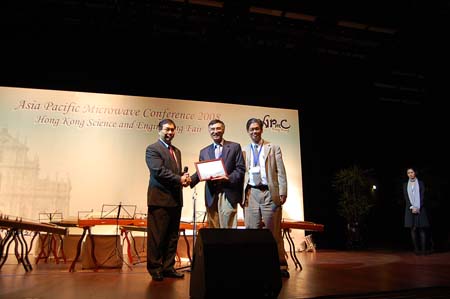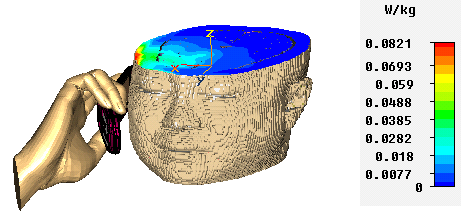Homepage
Home
Biophotonics--Femtosecond fusion
Prof. KT Chan and his student, Mr. He Hao, published a recent paper on Biophotonics in Applied Physics Letters Vol.93, 163901 (2008). This paper has been highlighted in the 2008 Dec. issue of a very prestigious journal, Nature Photonics. The quotes from Nature Photonics read:
Researchers in Hong Kong have come up with a way of efficiently fusing human cells together using femtosecond light pulses from a fibre laser. Cell fusion happens naturally, but the ability to do it artificially provides cell biologists with a better understanding of the process. This in turn could lead to developments in genetic techniques and cancer treatments. Previous optics-based fusion techniques, such as the use of nanosecond-long pulses of UV light, have suffered from poor fusion success rates, about 10%, and surrounding cells were damaged by scattered light. Polyethylene glycol was found to improve the efficiency for fusing yeast cells, but it is toxic. The challenge is to improve the efficiency, but at the same time keep the cells alive. Hao He and co-workers from the Chinese University of Hong Kong take an all-optical approach that does not require any chemicals. Optical tweezers moved two human heptocellular carcinoma cells (HepG2) into contact. Pulses of light 200 fs long, at a wavelength of 1,550 nm were focused onto the contact area for about 10 s. The cells were then incubated for 90 minutes at 37 °C. The fusion was successful in 37.5% of the tests. Thermal effects were limited to the focal volume, reducing disruption to surrounding cells. The technique was also used to join two different types of cell, HepG2 and human cervical cancer cells, although this was achieved at a much lower efficiency of 10%.
http://www.ee.cuhk.edu.hk/wlink/ktNature_photon.2008.233.pdf
A significant citation of a pioneering paper by an EE team
One of early Applied Physics Letter papers by an EE team on semiconductor surface morphology by AFM (C. C. Hsu, Y. C. Lu, J. B. Xu, I. Wilson, Appl. Phys. Lett. 64, 1959 (1994).) has been cited by a Science paper (2006) from an IBM research group on silicon. The journal is very prestigious in science and technology community. The EE's team work has drawn global attention after its publication. Since then AFM has been widely used for surface quality test in various sectors of information technology industry.
Silicon Photonics and Nanophotonic devices
Dr T.K.Liang was awarded the Young Scientist Award by the Hong Kong Institution of Science (HKIS) (2005) for his 2004 work, while he was a PhD student in Prof Tsang’s group, in showing experimentally that silicon optical waveguides can provide over six times gain in amplifying optical pulses using Stimulated Raman scattering. Prof. H.K Tsang was awarded the Research Excellence Award 2006-2007 of CUHK, in recognition of his contributions in nonlinear silicon photonics, particularly the first measurements of nonlinearities in silicon waveguides at telecom wavelengths and on the understanding of the role of free carrier absorption in silicon Raman amplifiers. In 2006 Prof Tsang received $6.5 million funding for an ICP dry etching system and in 2008 Prof Tsang received funding from the University Grants Council totalling just over HK$10 million to purchase an electron-beam lithography system that can be used to make nanophotonic devices with feature sizes as small as 10nm.
Optical Processing for Next Generation Fiber Communications
Prof. Chester Shu’s team has demonstrated significant research progress in the area of optical communications as reflected by a number of research awards and paper awards. His Ph.D graduate Dr. Chow Kin-Kee received the Young Scientist Award from the Hong Kong Institution of Science (HKIS) in 2004 for his work on optical processing with nonlinear photonic crystal fiber. His another Ph.D graduate, Fok Mei Po Mable, received the prestigious IEEE LEOS Graduate Student Fellowship Award in 2005, the IEEE Hong Kong Section Postgraduate Paper First Prize in 2007, and the CUHK Best Research Output Award by research postgraduate student in the same year, based on the work in optical processing for advanced fiber-optic communication systems. Other students in his team received best paper awards from many academic conferences including the Conference on Lasers and Electro-Optics/Pacific Rim, Asia Optical Fiber Communication Conference, and the IEEE LEOS (HK) Postgraduate Conference, all in the areas of optical fiber communications.
The paper titled “Development of The First Chinese Electromagnetic Human Model and Its Use for SAR Calculations” received Asia-Pacific Microwave Conference (APMC) prize in 2008 Asia-Pacific Microwave Conference held in Hong Kong during Dec. 16-20, 2008.
Development of The First Chinese Electromagnetic Human Model and Its Use for SAR Calculations
Ke-Li Wu1, Pheng Ann Heng2, Xin Gao1, Yongming Xie2, Lei Zhao1, Ji Chen3 and Min Zhang4
- Dept. of Electronic Engineering, The Chinese University of Hong Kong
- Dept. of Computer Science and Engineering, The Chinese University of Hong Kong
- Dept. of Electrical and Computer Engineering, University of Houston
- CST China Ltd
The development of the first Chinese Electromagnetic Human Model (CEMHM) in The Chinese University of Hong Kong is reported in this paper. The model can be used in any electromagnetic simulation platforms to understand accurately the biological effects on human body caused by RF and microwave radiation. The CEMHM model is developed based on the first Chinese Visible Human (CVH) data set containing 3640 serial axial anatomical images. In particular, the CEMHM model with a voxel resolution of up to 0.17 x 0.17 x 0.25 mm for the head and 0.17 x 0.17 x 0.5 mm for the rest of the body, which allows accurately modeling of 49 different human tissues and organs in the head model. As compared to the American’s HUGO Anatomical Data Set whose resolution is 1x1x1 mm and European Virtual Family models whose resolution is 0.5 x 0.5 x1 mm in the head and 0.9 x 0.9 x 2 mm in the trunk and the limbs, the CEMHM is the finest human body model under development in the world. The CEMHM model has been used to calculate the electromagnetic field and specific absorption rate (SAR) distributions caused by the radiation of a mobile phone.





